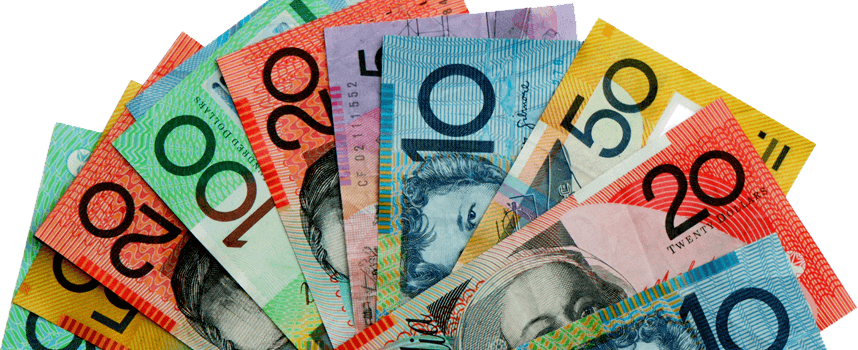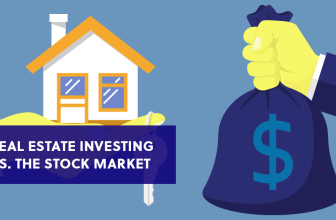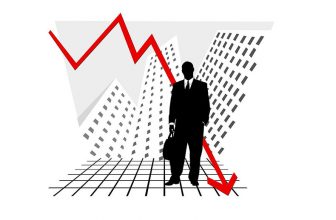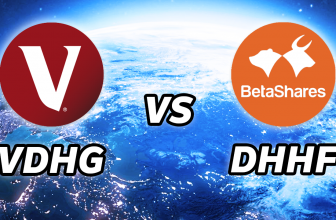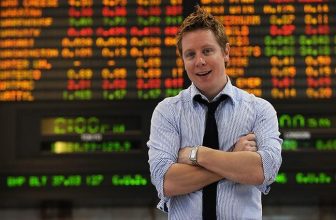Dividend Investing is a popular choice for Australian Passive Investors and there are quite a few nuances among dividend ETFs on the ASX in Australia which I will cover today. Australian dividend ETFs vary quite a lot between fees, indexes, yield rates and strategies. Today we’re going to be covering a highly requested topic about an extremely popular way to generate passive income in Australia, which is through the use of High Yield ETFs or Dividend ETFs.
It’s the concept that you can essentially do nothing all day while you sit at home and make money from anywhere in the world. And it’s an interesting idea to say the least, after all who wouldn’t want to make a lot of money without having to work! The good news is that there are quite a few different dividend focused ETFs available in Australia and are great because they don’t involve lots of working to manage like many other “passive” income streams, primarily thinking about investment properties here!
I want to be upfront here and let you know that these dividend ETFs aren’t going to make you filthy rich overnight. However the good news is that they will provide you consistent income over the long term, where if you continue to increase your position over time, you can eventually reach the point where dividend income will be able to cover your expenses and more!
Now, I’ll be going over several different dividend ETF categories today so you’ll be able to find one that is suitable for yourself whatever your circumstances are. I’ll break down the best dividend ETFs in the following categories:
- The best Australian high dividend ETF
- The best International dividend ETF
- The best Actively Managed dividend ETF
- The best Overall dividend ETF on the ASX in 2020 (this one might actually surprise you)
- I’ve omitted Real Estate Investment Trusts as I want to cover them properly separately as they are quite unique
I wanted to be extremely thorough in how I looked at the different Aussie High Dividend ETFs available on the market. The criteria I looked to evaluate the different options were: size of the ETF (the actual funds under management, as iit will influence the liquidity), the management fee (as it’s the one variable you are able to control as an investor) and historical returns both from a dividend perspective but also a growth perspective. As capital growth returns is often an overlooked metric when evaluating dividend ETFs but is actually extremely important.
If you think of a dividend ETF as a honeypot that spits out a portion of it’s sweet honey every quarter. Imagine over time if your honeypot keeps reducing in size, that portion of honey it can provide will keep reducing and eventually it won’t be able to provide you with any honey! As even if your dividend yield is remaining stable over time, if your capital growth is negative, then your dividend income would actually be going down each year!
Best Australian Dividend ETF – Vanguard Australian Shares High Yield ETF (VHY)
The vast majority of the dividend ETFs on the ASX are focused on extracting dividends from Australian companies, and this isn’t really surprising as Aussie companies are way more likely to pay out dividends then Global companies. There’s also a much bigger benefit to the shareholders from Aussie dividends as they are usually franked, which means you’ll also get a tax benefit in addition to your dividend payment.
The ETF that I think is best for High Dividends from Aussie companies does not have the highest pure dividend yield out of all the ETFs I compared, however it was the only option that I looked at that had a positive capital growth return since inception, all the others had negative capital growth returns. And like I mentioned previously there is no point having high dividend yields if each year the income is reducing because the size of your pot is getting smaller.
The fund that I think is the best Australian Dividend ETF is the Vanguard Australian Shares High Yield ETF or VHY. To start with VHY is by far the most popular dividend ETF on the ASX, like it’s not even remotely close.
VHY has over $1.3 billion is funds under management, with the next closest IHD having only $281 million, not even a quarter, in fact the next 4 most popular aussie dividend ETFs combined still don’t even come close to matching the funds under management of VHY. There’s definitely a few reasons why it’s so popular which I’ll dive in to but the first and most obvious reason is that it has the lowest management fee out of all its competitors at only 0.25% p.a, with the highest being ZYAU at 0.35%, and I actually noticed that there is a direct correlation between management fee and funds under management with these dividend ETFs which is interesting in itself.
Now the next thing to note is that all of these dividend ETFs are actually tracking different underlying indexes, the one that VHY tracks is the FTSE Australia High Dividend Yield Index – and this index basically tracks companies with higher forecasted dividends relative to other ASX listed companies and excludes any REITs.
If we jump into what I’m sure you guys are most interested in which is the performance of the ETF. We can see like I previously mentioned that since inception in 2011 VHY has had a slight positive capital growth return of 0.32% p.a, which is important to ensure your dividend honeypot isn’t shrinking in size over time. What is really great is that the dividend income return has been over 6.39% p.a since inception and they are paid quarterly. The franking level varies each year but the last couple of years has been over 90% which makes it a great option for Aussie investors on the ASX.
Finally it has the highest number of holdings out of all the Australian company dividend ETFs that I reviewed, with 66 at the time of recording, which provides decent diversification, however the top 10 holdings do make up 68% of the ETF so it is a bit top heavy.
Best International Dividend ETF – SPDR S&P Global Dividend Fund (WDIV)
So moving onto the next category for people who would rather look globally for dividend income and don’t necessarily need or want franking credits. There’s actually far fewer international based dividend ETFs on the ASX, however there are still some good options.
There are 2 main ETFs to consider on the ASX if you want dividend income via companies around the world, INCM from BetaShares and WDIV from SPDR. However when comparing them side by side what I would consider to be the best international dividend ETF is WDIV no question.
Firstly the index that WDIV tracks (S&P Global Dividend Aristocrats) is designed to follow companies that have a policy of having stable or increasing dividends over a period of at least 10 years and the ETF has a solid track record returning 5.54% in dividend yield since inception in 2013, paid out semi-annually. And again another positive with WDIV is that since inception capital growth has remained steady at 0.07% and not lowered over time. Compare this with INCM from BetaShares where its index and ETF have only been around a couple of years, where the only comparison to go by has shown after 1 year it lost more than WDIV, I would have trouble recommending it for this particular category.
The management fee of WDIV is 0.5% p.a and its holdings are well diversified across many different sectors and countries. I think WDIV is a good option for investors who want strong global diversification for their dividend income and aren’t concerned with receiving franking credits. It’s had a strong track record and also only tracks companies that have had a track record with stable or growing dividends.
Best Actively Managed Dividend ETF – BetaShares Legg Mason Equity Income Fund (EINC)
Typically I’m not a massive fan of actively managed funds however there are cases when they can be suitable. Specifically if you have specific requirements out of your investments, like low volatility or more tax efficiency. And this is what two of the main benefits of what I consider to be the top actively managed dividend ETF on the ASX, the BetaShares Legg Mason Equity Income Fund or EINC.
EINC invests only in high-quality shares and does not use derivatives to generate income. Also, the Fund aims to maximise the benefits of franking credits for investors. The Fund’s active management approach targets lower portfolio volatility than the S&P/ASX 200 Index and less concentrated stock and sector exposures. EINC has only been around in its ETF form for a couple of years however the managed fund version which isn’t listed on the ASX has been around since 2011 and since inception has returned 7.28% p.a. With around 5.5% of that being from dividend yields. The franking level is high at 96% so they are definitely achieving their goal of high franked dividends and they are paid quarterly.
The management fee is high at 0.85% p.a but relative to other actively managed funds this is actually not too bad. My final point about EINC is that it’s suitable for investors who are looking for tactical exposure to tax efficient Aussie equities that want to ensure their core equity holdings that provide these dividends are not shrinking over the long run.
Best Overall Dividend ETF – BetaShares Australia 200 ETF (A200)
So here we are at the best overall dividend ETF on the ASX in 2020 and like I mentioned earlier, this one might actually surprise you. I’ve kind of hinted throughout this post that when you think about dividend income you need to also be thinking about your capital base. Because if your initial allocation of capital towards dividend ETFs is shrinking, your dividend income will also shrink over time (even if the yield % is stable). In saying that what I think is the best overall dividend ETF is actually the BetaShares Australia 200 ETF or A200.
Firstly it has an ultra low management fee of 0.07% p.a which is lower than its main competitor VAS which is 0.1%. Secondly its tracking an extremely old index the top 200 largest Australian companies on the ASX by market capitalisation also known as the ASX200, so we can get a really good idea of long term performance.
However I’m sure you’re thinking A200 isn’t a dividend ETF. Why do you think it’s the best overall dividend ETF? So I know my recommendation might be a bit controversial but let me explain my reasoning. If you look at the ASX200’s capital growth over the last 10 years, it’s actually a small proportion of its overall growth at 2.81% p.a.
Compare this to its overall growth including dividends (and also including the benefits of the franking credits since it’s actually about 80% franked) we get 8.98% p.a for the last 10 years, which means that 6.17% of the total return every year is actually from dividends.
Not only is this figure alone extremely high but do you remember my honeypot example from the start of the post. Well in the case of A200, not only do you have a honeypot that is providing you with lots of consistent honey each year, well your honeypot is actually also growing each year (by almost 3%). This means that even if you didn’t reinvest any of your dividends each year, your dividend income would actually keep increasing each year because of this capital growth. You would be able to get a similar benefit from any Aussie shares index ETF but I like A200 because it has the lowest fees.
The main downsides to A200 (and any aussie index fund) is that there isn’t really any global diversification and you are quite exposed to a few sectors like financials and resources. However if you’re looking for passive income through dividends (that are paid quarterly), which are likely to actually grow over time then I think A200 is a great choice.
So there you have it, that’s my top dividend ETFs on the ASX in 2020. But with all of that please just remember that passive income through dividends is not going to give you a lot of money initially, it’s not going to be like printing lamborghinis every month without a significant amount of time and capital. However dividend growth investing is a solid foundation for any long term passive investing strategy and is proven to provide returns over the long term.
It’s not about getting ahead of ourselves and trying to get really big numbers off the bat and being totally confused about how to get there, it’s all about dipping in your toes figuring out what works and just starting. It’s going to be slow up front, it’s going to take a lot of time, but in the future it’s going to be worth it.

